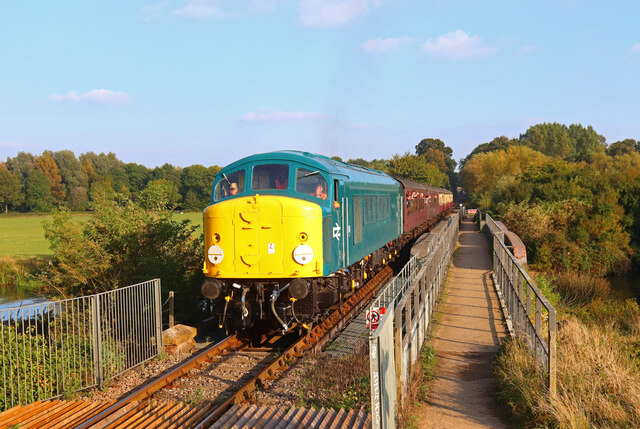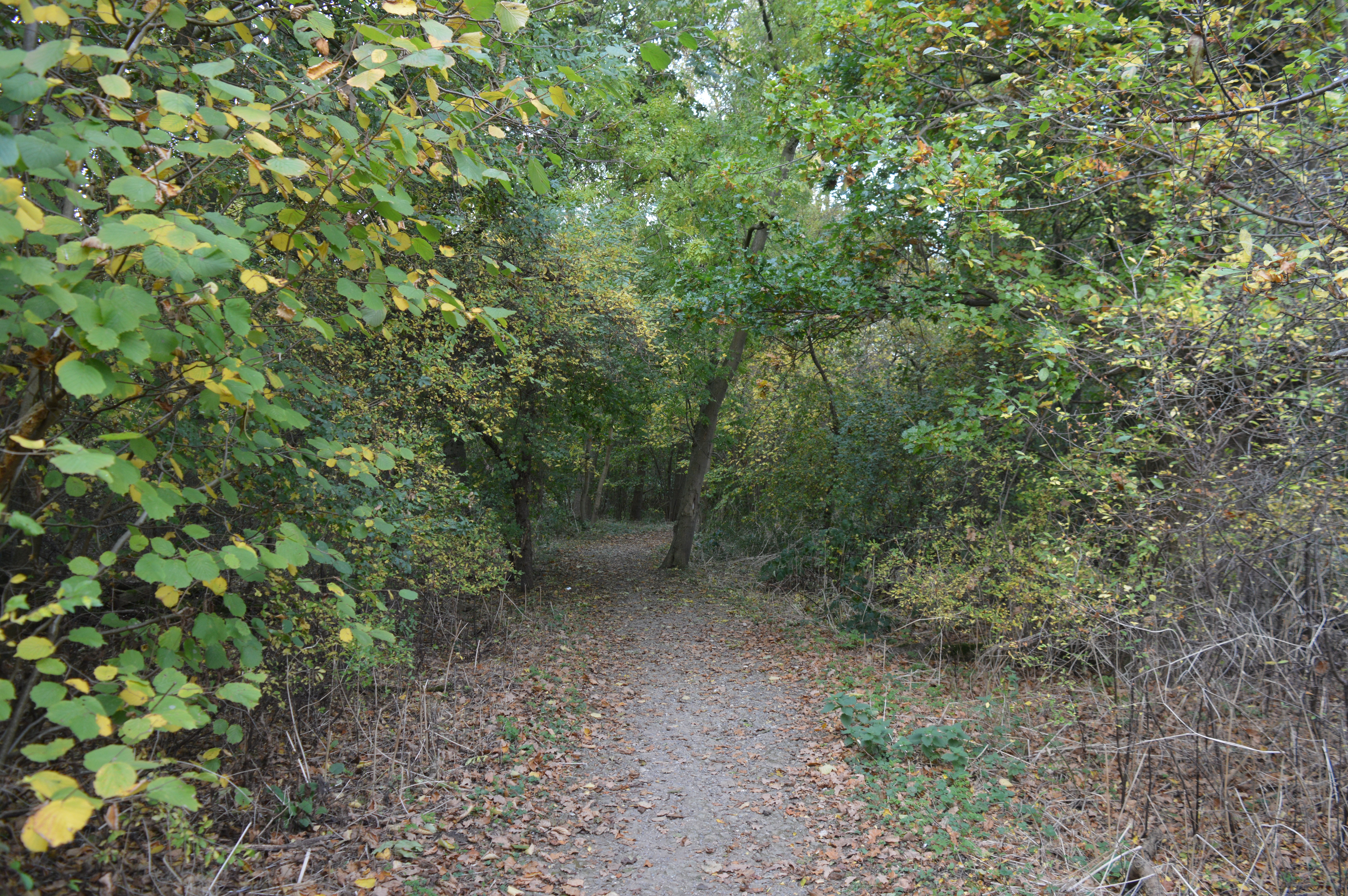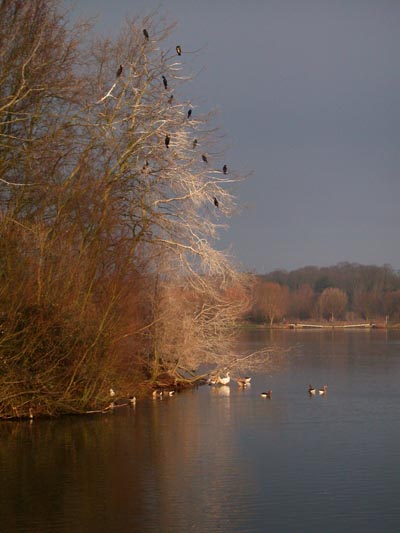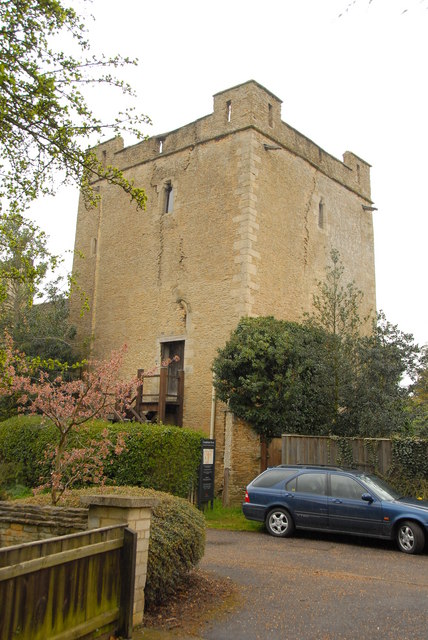Ferryhill Plantation
Wood, Forest in Northamptonshire
England
Ferryhill Plantation

Ferryhill Plantation is a picturesque woodland located in Northamptonshire, England. It is situated near the village of Wood and covers an area of approximately 200 acres. The plantation is known for its diverse range of trees and is often referred to as a forest due to its size and density.
The woodland consists mainly of deciduous trees, including oak, beech, and ash, which create a vibrant and colorful landscape throughout the year. The plantation also features some coniferous trees, such as pine and fir, adding to its biodiversity.
Ferryhill Plantation is a popular destination for nature enthusiasts and outdoor lovers. It offers a variety of walking trails and paths, allowing visitors to explore the beauty of the woodland at their own pace. The plantation is home to a rich array of wildlife, including various bird species, deer, squirrels, and rabbits.
The woodland has a fascinating history, dating back to the 19th century when it was initially established as a commercial timber plantation. Over the years, it has been carefully managed to maintain its natural beauty and ecological balance.
Ferryhill Plantation is not only a haven for wildlife but also serves as an important carbon sink, helping to mitigate the effects of climate change. It provides a tranquil and serene environment for visitors to escape the hustle and bustle of modern life and connect with nature.
If you have any feedback on the listing, please let us know in the comments section below.
Ferryhill Plantation Images
Images are sourced within 2km of 52.573267/-0.30933159 or Grid Reference TL1498. Thanks to Geograph Open Source API. All images are credited.
![Longthorpe buildings [1] Longthorpe Post Office, number 293 Thorpe Road, was built in the 18th century. Constructed of plastered rubble stone under a thatch roof. There is a small shop extension on the right. Listed, grade II, with details at: <span class="nowrap"><a title="https://historicengland.org.uk/listing/the-list/list-entry/1126916" rel="nofollow ugc noopener" href="https://historicengland.org.uk/listing/the-list/list-entry/1126916">Link</a><img style="margin-left:2px;" alt="External link" title="External link - shift click to open in new window" src="https://s1.geograph.org.uk/img/external.png" width="10" height="10"/></span>
Longthorpe is a village in the city of Peterborough, some 2 miles west of the city centre. A Roman fort was established here in the 1st century covering 27 acres, later replaced by another fort of 11 acres. The village is home to Longthorpe Tower, a 14th-century tower and fortified manor house, it contains the finest and most complete set of domestic paintings of the period in northern Europe.](https://s0.geograph.org.uk/geophotos/07/12/49/7124924_227d1c75.jpg)
![Longthorpe houses [1] Originally three cottages, now two houses, numbers 307 and 309 Thorpe Road, are 18th century cottages with part of one wing from the 17th century. Constructed of coursed rubble stone under a thatch roof. Listed, grade II, with details at: <span class="nowrap"><a title="https://historicengland.org.uk/listing/the-list/list-entry/1309842" rel="nofollow ugc noopener" href="https://historicengland.org.uk/listing/the-list/list-entry/1309842">Link</a><img style="margin-left:2px;" alt="External link" title="External link - shift click to open in new window" src="https://s1.geograph.org.uk/img/external.png" width="10" height="10"/></span>
Longthorpe is a village in the city of Peterborough, some 2 miles west of the city centre. A Roman fort was established here in the 1st century covering 27 acres, later replaced by another fort of 11 acres. The village is home to Longthorpe Tower, a 14th-century tower and fortified manor house, it contains the finest and most complete set of domestic paintings of the period in northern Europe.](https://s0.geograph.org.uk/geophotos/07/12/49/7124928_45696466.jpg)
![Longthorpe houses [2] Foxgloves, number 310 Thorpe Road, is one house created from three 18th century cottages. Constructed of rendered rubble stone under a thatch roof. Listed, grade II, <span class="nowrap"><a title="https://historicengland.org.uk/listing/the-list/list-entry/1126920" rel="nofollow ugc noopener" href="https://historicengland.org.uk/listing/the-list/list-entry/1126920">Link</a><img style="margin-left:2px;" alt="External link" title="External link - shift click to open in new window" src="https://s1.geograph.org.uk/img/external.png" width="10" height="10"/></span>
Longthorpe is a village in the city of Peterborough, some 2 miles west of the city centre. A Roman fort was established here in the 1st century covering 27 acres, later replaced by another fort of 11 acres. The village is home to Longthorpe Tower, a 14th-century tower and fortified manor house, it contains the finest and most complete set of domestic paintings of the period in northern Europe.](https://s3.geograph.org.uk/geophotos/07/12/49/7124931_7cbe149e.jpg)
![Longthorpe features [1] From Thorpe Road, this footpath runs to Melford Close.
Longthorpe is a village in the city of Peterborough, some 2 miles west of the city centre. A Roman fort was established here in the 1st century covering 27 acres, later replaced by another fort of 11 acres. The village is home to Longthorpe Tower, a 14th-century tower and fortified manor house, it contains the finest and most complete set of domestic paintings of the period in northern Europe.](https://s1.geograph.org.uk/geophotos/07/12/49/7124933_3a82256a.jpg)
![Longthorpe houses [3] Number 317 Thorpe Road is built gable end to the street. Constructed in the 18th century of rubble stone with freestone quoins under a thatch roof. There is a modern extension on the left. Listed, grade II, with details at: <span class="nowrap"><a title="https://historicengland.org.uk/listing/the-list/list-entry/1126917" rel="nofollow ugc noopener" href="https://historicengland.org.uk/listing/the-list/list-entry/1126917">Link</a><img style="margin-left:2px;" alt="External link" title="External link - shift click to open in new window" src="https://s1.geograph.org.uk/img/external.png" width="10" height="10"/></span>
Longthorpe is a village in the city of Peterborough, some 2 miles west of the city centre. A Roman fort was established here in the 1st century covering 27 acres, later replaced by another fort of 11 acres. The village is home to Longthorpe Tower, a 14th-century tower and fortified manor house, it contains the finest and most complete set of domestic paintings of the period in northern Europe.](https://s2.geograph.org.uk/geophotos/07/12/49/7124938_f23049ad.jpg)
![Parish church [1] The Anglican parish church of St Botolph was built in the 13th century on the site of an 11th century predecessor. Constructed of rubble stone with freestone quoins under a tile roof. The building was restored in 1869 and most of the fittings are from this date. Listed, grade I, with details at: <span class="nowrap"><a title="https://historicengland.org.uk/listing/the-list/list-entry/1331544" rel="nofollow ugc noopener" href="https://historicengland.org.uk/listing/the-list/list-entry/1331544">Link</a><img style="margin-left:2px;" alt="External link" title="External link - shift click to open in new window" src="https://s1.geograph.org.uk/img/external.png" width="10" height="10"/></span>
Longthorpe is a village in the city of Peterborough, some 2 miles west of the city centre. A Roman fort was established here in the 1st century covering 27 acres, later replaced by another fort of 11 acres. The village is home to Longthorpe Tower, a 14th-century tower and fortified manor house, it contains the finest and most complete set of domestic paintings of the period in northern Europe.](https://s3.geograph.org.uk/geophotos/07/12/49/7124943_98ddc408.jpg)
![Parish church [2] The churchyard. The Anglican parish church of St Botolph was built in the 13th century on the site of an 11th century predecessor. Constructed of rubble stone with freestone quoins under a tile roof. The building was restored in 1869 and most of the fittings are from this date. Listed, grade I, with details at: <span class="nowrap"><a title="https://historicengland.org.uk/listing/the-list/list-entry/1331544" rel="nofollow ugc noopener" href="https://historicengland.org.uk/listing/the-list/list-entry/1331544">Link</a><img style="margin-left:2px;" alt="External link" title="External link - shift click to open in new window" src="https://s1.geograph.org.uk/img/external.png" width="10" height="10"/></span>
Longthorpe is a village in the city of Peterborough, some 2 miles west of the city centre. A Roman fort was established here in the 1st century covering 27 acres, later replaced by another fort of 11 acres. The village is home to Longthorpe Tower, a 14th-century tower and fortified manor house, it contains the finest and most complete set of domestic paintings of the period in northern Europe.](https://s1.geograph.org.uk/geophotos/07/12/49/7124945_37f363ec.jpg)
![Longthorpe houses [4] Number 320 Thorpe Road is a &#039;L&#039; shaped cottage with part built in the 17th century and part in the 18th century. Constructed of rubble stone, mostly rendered, under a thatch roof. Listed, grade II, with details at: <span class="nowrap"><a title="https://historicengland.org.uk/listing/the-list/list-entry/1309785" rel="nofollow ugc noopener" href="https://historicengland.org.uk/listing/the-list/list-entry/1309785">Link</a><img style="margin-left:2px;" alt="External link" title="External link - shift click to open in new window" src="https://s1.geograph.org.uk/img/external.png" width="10" height="10"/></span>
Longthorpe is a village in the city of Peterborough, some 2 miles west of the city centre. A Roman fort was established here in the 1st century covering 27 acres, later replaced by another fort of 11 acres. The village is home to Longthorpe Tower, a 14th-century tower and fortified manor house, it contains the finest and most complete set of domestic paintings of the period in northern Europe.](https://s0.geograph.org.uk/geophotos/07/12/49/7124952_128ba418.jpg)
![Longthorpe houses [5] Numbers 326 and 328 Thorpe Road, are a two 18th century cottages with later, rear additions. Constructed of rubble stone under a thatch roof. Listed, grade II, with details at: <span class="nowrap"><a title="https://historicengland.org.uk/listing/the-list/list-entry/1126921" rel="nofollow ugc noopener" href="https://historicengland.org.uk/listing/the-list/list-entry/1126921">Link</a><img style="margin-left:2px;" alt="External link" title="External link - shift click to open in new window" src="https://s1.geograph.org.uk/img/external.png" width="10" height="10"/></span>
Longthorpe is a village in the city of Peterborough, some 2 miles west of the city centre. A Roman fort was established here in the 1st century covering 27 acres, later replaced by another fort of 11 acres. The village is home to Longthorpe Tower, a 14th-century tower and fortified manor house, it contains the finest and most complete set of domestic paintings of the period in northern Europe.](https://s0.geograph.org.uk/geophotos/07/12/49/7124956_bf710ba9.jpg)
![Longthorpe houses [6] Number 329 Thorpe Road is an 18th century cottage. Constructed of painted rubble stone under a thatch roof. Listed, grade II, with details at: <span class="nowrap"><a title="https://historicengland.org.uk/listing/the-list/list-entry/1331508" rel="nofollow ugc noopener" href="https://historicengland.org.uk/listing/the-list/list-entry/1331508">Link</a><img style="margin-left:2px;" alt="External link" title="External link - shift click to open in new window" src="https://s1.geograph.org.uk/img/external.png" width="10" height="10"/></span>
Longthorpe is a village in the city of Peterborough, some 2 miles west of the city centre. A Roman fort was established here in the 1st century covering 27 acres, later replaced by another fort of 11 acres. The village is home to Longthorpe Tower, a 14th-century tower and fortified manor house, it contains the finest and most complete set of domestic paintings of the period in northern Europe.](https://s2.geograph.org.uk/geophotos/07/12/49/7124958_d960cd89.jpg)
![Longthorpe features [2] A closer look at the thatch figures on the roof of number 329 Thorpe Road <a href="https://www.geograph.org.uk/photo/7124958">TL1698 : Longthorpe houses [6]</a>.
Longthorpe is a village in the city of Peterborough, some 2 miles west of the city centre. A Roman fort was established here in the 1st century covering 27 acres, later replaced by another fort of 11 acres. The village is home to Longthorpe Tower, a 14th-century tower and fortified manor house, it contains the finest and most complete set of domestic paintings of the period in northern Europe.](https://s0.geograph.org.uk/geophotos/07/12/49/7124960_16624ac1.jpg)
![Longthorpe features [3] The gates to Tower House, number 333 Thorpe Road.
Longthorpe is a village in the city of Peterborough, some 2 miles west of the city centre. A Roman fort was established here in the 1st century covering 27 acres, later replaced by another fort of 11 acres. The village is home to Longthorpe Tower, a 14th-century tower and fortified manor house, it contains the finest and most complete set of domestic paintings of the period in northern Europe.](https://s3.geograph.org.uk/geophotos/07/12/49/7124963_a22011b1.jpg)
![Longthorpe Tower [1] Longthorpe Tower was built in the early 14th century as an extension to an existing fortified manor house. The tower has three storeys, is built of stone with walls 6 to 7 feet thick. The first floor was originally designed as living space and contains English medieval wall paintings of religious, secular and moral themes from circa 1330. They were whitewashed around the time of the Reformation and remained hidden until their rediscovery in the 1940s. The tower is listed, grade I, with details at: <span class="nowrap"><a title="https://historicengland.org.uk/listing/the-list/list-entry/1162040" rel="nofollow ugc noopener" href="https://historicengland.org.uk/listing/the-list/list-entry/1162040">Link</a><img style="margin-left:2px;" alt="External link" title="External link - shift click to open in new window" src="https://s1.geograph.org.uk/img/external.png" width="10" height="10"/></span> A Scheduled Ancient Monument with much history and detail at: <span class="nowrap"><a title="https://historicengland.org.uk/listing/the-list/list-entry/1013284" rel="nofollow ugc noopener" href="https://historicengland.org.uk/listing/the-list/list-entry/1013284">Link</a><img style="margin-left:2px;" alt="External link" title="External link - shift click to open in new window" src="https://s1.geograph.org.uk/img/external.png" width="10" height="10"/></span> The tower is in the care of English heritage.
Longthorpe is a village in the city of Peterborough, some 2 miles west of the city centre. A Roman fort was established here in the 1st century covering 27 acres, later replaced by another fort of 11 acres. The village is home to Longthorpe Tower, a 14th-century tower and fortified manor house, it contains the finest and most complete set of domestic paintings of the period in Northern Europe.](https://s0.geograph.org.uk/geophotos/07/12/49/7124976_f58e1197.jpg)
![Longthorpe Tower [2] Longthorpe Tower was built in the early 14th century as an extension to an existing fortified manor house. The tower has three storeys, is built of stone with walls 6 to 7 feet thick. The first floor was originally designed as living space and contains English medieval wall paintings of religious, secular and moral themes from circa 1330. They were whitewashed around the time of the Reformation and remained hidden until their rediscovery in the 1940s. The tower is listed, grade I, with details at: <span class="nowrap"><a title="https://historicengland.org.uk/listing/the-list/list-entry/1162040" rel="nofollow ugc noopener" href="https://historicengland.org.uk/listing/the-list/list-entry/1162040">Link</a><img style="margin-left:2px;" alt="External link" title="External link - shift click to open in new window" src="https://s1.geograph.org.uk/img/external.png" width="10" height="10"/></span> A Scheduled Ancient Monument with much history and detail at: <span class="nowrap"><a title="https://historicengland.org.uk/listing/the-list/list-entry/1013284" rel="nofollow ugc noopener" href="https://historicengland.org.uk/listing/the-list/list-entry/1013284">Link</a><img style="margin-left:2px;" alt="External link" title="External link - shift click to open in new window" src="https://s1.geograph.org.uk/img/external.png" width="10" height="10"/></span> The tower is in the care of English heritage.
Longthorpe is a village in the city of Peterborough, some 2 miles west of the city centre. A Roman fort was established here in the 1st century covering 27 acres, later replaced by another fort of 11 acres. The village is home to Longthorpe Tower, a 14th-century tower and fortified manor house, it contains the finest and most complete set of domestic paintings of the period in Northern Europe.](https://s3.geograph.org.uk/geophotos/07/12/49/7124983_98f24ee8.jpg)
![Longthorpe Tower [3] Longthorpe Tower was built in the early 14th century as an extension to an existing fortified manor house. The tower has three storeys, is built of stone with walls 6 to 7 feet thick. The first floor was originally designed as living space and contains English medieval wall paintings of religious, secular and moral themes from circa 1330. They were whitewashed around the time of the Reformation and remained hidden until their rediscovery in the 1940s. The tower is listed, grade I, with details at: <span class="nowrap"><a title="https://historicengland.org.uk/listing/the-list/list-entry/1162040" rel="nofollow ugc noopener" href="https://historicengland.org.uk/listing/the-list/list-entry/1162040">Link</a><img style="margin-left:2px;" alt="External link" title="External link - shift click to open in new window" src="https://s1.geograph.org.uk/img/external.png" width="10" height="10"/></span> A Scheduled Ancient Monument with much history and detail at: <span class="nowrap"><a title="https://historicengland.org.uk/listing/the-list/list-entry/1013284" rel="nofollow ugc noopener" href="https://historicengland.org.uk/listing/the-list/list-entry/1013284">Link</a><img style="margin-left:2px;" alt="External link" title="External link - shift click to open in new window" src="https://s1.geograph.org.uk/img/external.png" width="10" height="10"/></span> The tower is in the care of English heritage.
Longthorpe is a village in the city of Peterborough, some 2 miles west of the city centre. A Roman fort was established here in the 1st century covering 27 acres, later replaced by another fort of 11 acres. The village is home to Longthorpe Tower, a 14th-century tower and fortified manor house, it contains the finest and most complete set of domestic paintings of the period in Northern Europe.](https://s1.geograph.org.uk/geophotos/07/12/49/7124985_d043332e.jpg)
![Longthorpe Tower [4] Longthorpe Tower was built in the early 14th century as an extension to an existing fortified manor house. The tower has three storeys, is built of stone with walls 6 to 7 feet thick. The first floor was originally designed as living space and contains English medieval wall paintings of religious, secular and moral themes from circa 1330. They were whitewashed around the time of the Reformation and remained hidden until their rediscovery in the 1940s. The tower is listed, grade I, with details at: <span class="nowrap"><a title="https://historicengland.org.uk/listing/the-list/list-entry/1162040" rel="nofollow ugc noopener" href="https://historicengland.org.uk/listing/the-list/list-entry/1162040">Link</a><img style="margin-left:2px;" alt="External link" title="External link - shift click to open in new window" src="https://s1.geograph.org.uk/img/external.png" width="10" height="10"/></span> A Scheduled Ancient Monument with much history and detail at: <span class="nowrap"><a title="https://historicengland.org.uk/listing/the-list/list-entry/1013284" rel="nofollow ugc noopener" href="https://historicengland.org.uk/listing/the-list/list-entry/1013284">Link</a><img style="margin-left:2px;" alt="External link" title="External link - shift click to open in new window" src="https://s1.geograph.org.uk/img/external.png" width="10" height="10"/></span> The tower is in the care of English heritage.
Longthorpe is a village in the city of Peterborough, some 2 miles west of the city centre. A Roman fort was established here in the 1st century covering 27 acres, later replaced by another fort of 11 acres. The village is home to Longthorpe Tower, a 14th-century tower and fortified manor house, it contains the finest and most complete set of domestic paintings of the period in Northern Europe.](https://s2.geograph.org.uk/geophotos/07/12/49/7124986_b0f9dee8.jpg)
Ferryhill Plantation is located at Grid Ref: TL1498 (Lat: 52.573267, Lng: -0.30933159)
Division: Soke of Peterborough
Unitary Authority: Peterborough
Police Authority: Cambridgeshire
What 3 Words
///appeal.snap.angle. Near Castor, Cambridgeshire
Nearby Locations
Related Wikis
Thorpe Wood
Thorpe Wood is a 10 hectare nature reserve on the western outskirts of Peterborough in Cambridgeshire. It is managed by the Wildlife Trust for Bedfordshire...
Milton Hall
Milton Hall near Peterborough, is the largest private house in Cambridgeshire, England. As part of the Soke of Peterborough, it was formerly part of Northamptonshire...
Nene Park, Peterborough
Nene Park is a country park in the city of Peterborough, Cambridgeshire in the United Kingdom. Opened in 1978, it occupies a site approximately three and...
Longthorpe Tower
Longthorpe Tower is a 14th-century three-storey tower in the Longthorpe area of Peterborough, Cambridgeshire, England. It is famous for its well-preserved...
Ferry Meadows railway station
Ferry Meadows is a station on the Nene Valley Railway between Wansford and Orton Mere. The current station has one platform, and has no car park of its...
Longthorpe
Longthorpe is an area of the city of Peterborough, in the ceremonial county of Cambridgeshire, England. Located two miles (3.2 km) west from the city centre...
Netherton, Peterborough
Netherton is a residential area of the city of Peterborough, in the Peterborough district, in the ceremonial county of Cambridgeshire, England. For electoral...
Jack Hunt School
Jack Hunt School, officially Jack Hunt School Language College, is a co-educational secondary school and sixth form located in Netherton in the city of...
Nearby Amenities
Located within 500m of 52.573267,-0.30933159Have you been to Ferryhill Plantation?
Leave your review of Ferryhill Plantation below (or comments, questions and feedback).





